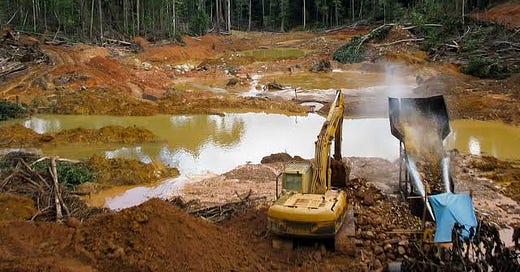Why Lula and Dream Team could bring Hope to Solving Problems about Brazil's Amazon Deforestation
The appointment of a climate activist and worsening conditions of the Amazon could bring hope to solving an urgent problem
Deforestation in Brazil, Credit, Internet geography
Brazil’s president, Luiz Inacio Lula da Silva, announced that Amazon’s activist, Marina Silva, would be the nation’s minister of environment, potentially putting the country in a good position to tackle deforestation in the Amazon rain forest, which reached a 15-year high in the year ending in July 2021.
In another development, Norway promised to reactivate the Amazon Fund, frozen since August 2019, even though it still holds about $620 million to tackle Brazil’s share of the problems related to the world’s biggest rain forest, which has about 218.4 square kilometers of forest cover destroyed, an area nearly four times the size of Manhattan, the level of destruction more than 150 percent from the 87.2 square kilometers destroyed in December 2021.
When Lulu assumed office on Sunday, he also revoked environmental policies of his far-right predecessor, Jair Bolsonaro, for allowing the deforestation of the Amazon to reach its highest level since 2008, a situation which fueled the occurrence of more than 76,000 fires in 2019 at an area called “the lungs of the world”.
With the policies of Bolsonaro in relation to the Amazon revoked, and the reactivation of the Amazon Fund, as well as the appointment of Marina Silva as the environment minister at a time of global outcry over the deforestation of the “lungs of the world”, hope re-surges that the world might yet witness a slowdown in the deforestation taking place in the Amazon, which operates as a huge carbon sink that helps to cool the global temperature and is home to several millions of plant, animal, and insect species.
Average annual deforestation in the Brazil’s Amazon rose by 75.5 percent from the previous decade, its warm temperatures correlating with the warm temperatures over the Tibetan plateau and the West Antarctic ice sheet, raising fears about an accelerated sea rise occasioned by the melting of ice.
Some fear the transformation of the Amazon rain forest into a Savannah, with as much as 40% of it now at a point where it could exist as a savannah instead of as rainforest, and scientists saying about three quarters of the rainforest showing signs of “resilience loss” – a reduced ability to recover from disturbances like droughts, logging and fires.
More than 76,000 wildfires burned in Brazil in 2021, the majority of them in the Amazon, an increase of 80 percent over the same period in the year before, exceeding the figure of 2016 at more than 69,000 fires, giving the impression that the rain forest is under siege.
In neighboring Bolivia, rainfalls in parts of the Amazon fell by 17 percent and temperature rose by 1.1 degrees Celsius, turning some parts of the dense rain forest into a Savannah, with trees in the north of the country refusing to produce fruits for indigenous groups.
The reemergence of Lula could assist at managing the temperature rise of the Amazon in Brazil and Bolivia respectively, enabling policies to bring down the rate of wildfires in this sensitive part of the earth, slowing down the transformation of the rain forest into a Savannah, as well as halt the annual rate of deforestation, bringing a positive impact over the situation on the Tibetan plateau and the West Antarctic ice sheet.
A steep drop in deforestation took place in the Amazon when Lula led Brazil from 2003 to 2010, making the rate fall to less than half of 2004 levels, ultimately reducing the rate in the Amazon region by 75 percent from the 1996-2005 annual rate, increasing the tropical forest’s capacity at mitigating global climate change.
Silva, during her tenure as environment minister under Lula in his first stint as president, showed commitments to restoring health to the Amazon, which ejects more than 20 billion tons of water vapor into the atmosphere each day, the source of 20 percent of the world’s freshwater, the storehouse of an estimated 90 billion to 140 billion metric tons of carbon.
The Amazon Fund opened the floodgates for international efforts at assisting Brazil’s attempts to halt the deforestation in the Amazon, aimed at preventing a crisis for all over the situation, as the climate change accelerates in critical areas such as the Amazon, the Antarctic, and the Tibetan plateau.
Based on the past, Lula and Silva could play positive roles at making the Amazon Fund operational, as well as make work towards restoring health to the Amazon possible, through implementing policies at the reduction of the deforestation rate in the near future.
Silva resigned from Lula’s previous administration over the mammoth Belo Monte Dam, a project that displaced some 40,000 people and dried up stretches of the Tingu River that served as the lifeblood of indigenous groups. They must work together going forwards to prevent further disagreements, especially at a period when agribusiness interests destroy the Amazon through illegal deforestation, putting the entire human race at the brink of disaster.
What to Eat
Vegan Brazilian bowl, Credit, Wanderlust Kitchen





